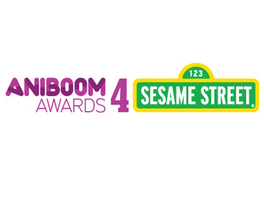PBS KIDS earned the #1 ranking as the most educational media brand for children
Monday, February 22nd, 2010The American people have named PBS the most trusted and unbiased institution among nationally known organizations, the most trusted source of news and public affairs1 among broadcast and cable sources,1 and the most educational media brand for children ages 2-82 according to new national polls.
The research was conducted in December 2009 and January 2010 by the non-partisan, international research company GfK Roper Public Affairs & Media.
“In a media world where profits drive decisions, public media stands alone in its singular focus on the American public and not the bottom line. PBS does more to serve the needs of our modern democracy with trusted, independent journalism and does more to help children succeed than any other media enterprise. Today’s citizens — whether they watch on-air, online, on mobile devices or in the classroom — understand this fundamental difference that distinguishes PBS,” said Paula Kerger, PBS President and CEO.
This is the seventh consecutive year the public has named PBS the nation’s most-trusted institution. In the 2010 poll, 45 percent of respondents said they trust PBS more than any other nationally known organization. PBS ranked at the top in public trust among every age group, ethnicity, income and education level measured. Second in trust are “courts of law,” which are trusted a great deal by 26 percent.1 PBS ranks highest in importance among 58 percent of respondents when compared to commercial broadcast (43 percent respondents) and cable television (40 percent).1
Additional highlights of the two national surveys include:
#1 for News and Public Affairs
· PBS remains the network with the most trusted news and public affairs programs, with 40 percent trusting its programs a “great deal.” Fox News Channel was second with 29 percent and CNN was third at 27 percent.1
· In an effort to measure bias, the survey concluded that 40 percent of Americans rated the news coverage, investigations and discussions of major issues on PBS programs as “mostly fair” (when asked to choose among “liberal,” “mostly fair” and “conservative”). NBC and ABC tied for second by 33 percent of the respondents, CNN (31 percent), NPR (29 percent), Fox News Channel (25 percent) and MSNBC (24 percent).1
· More than 75 percent of the public believes PBS addresses key news, public affairs and social issues “very/moderately” well, including providing access to arts and culture (88 percent); promoting understanding of science and technology (82 percent); providing access to a variety of viewpoints (78 percent); informing people about health issues (77 percent); and informing people about important political and social issues (76 percent).1
#1 in Children’s Media
· PBS KIDS earned the #1 ranking as the most educational media brand for children, receiving 21 percent of the top ratings from respondents. National Geographic Kids was second with 13 percent of respondents and Nick Jr. received five percent.2
* PBS KIDS remains the most essential source of children’s programming, with 67 percent of respondents stating that PBS’ children’s service is “very important,” compared to 49 percent for cable and 44 percent of commercial broadcast television.1 Eighty-nine percent of respondents believe it is “very important” for PBS to provide children’s programming. 2
Excellent Tax Dollar Value
* About 80 percent of respondents, across all age groups, ethnicity, income and education level measured, believe funding for PBS is money “well spent.” Respondents also found PBS an “excellent” use of tax dollars, second only to military defense and ahead of public schools.1
* A near majority of Americans believe the federal funding PBS receives is insufficient. When informed that public broadcasting receives 15 percent of its funding from the government, and that this amount translates to about one dollar per person per year of government support, 46 percent believe this amount is “too little,” 39 percent say it’s “about right” and only 11 percent state that it’s “too much.”1
PBS annually commissions this research to measure the organization’s performance and value as judged by its most important stakeholder — the American public. With local independent stations rooted in communities across the country, public media is unrivalled in its commitment to optimize the power and potential of media to strengthen our democracy, build stronger communities and improve lives. Full results are available at pbs.org/roper2010.








